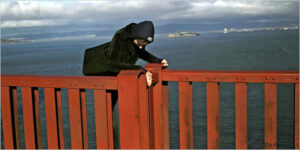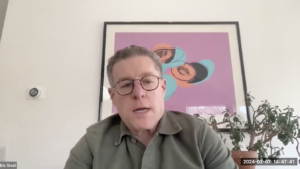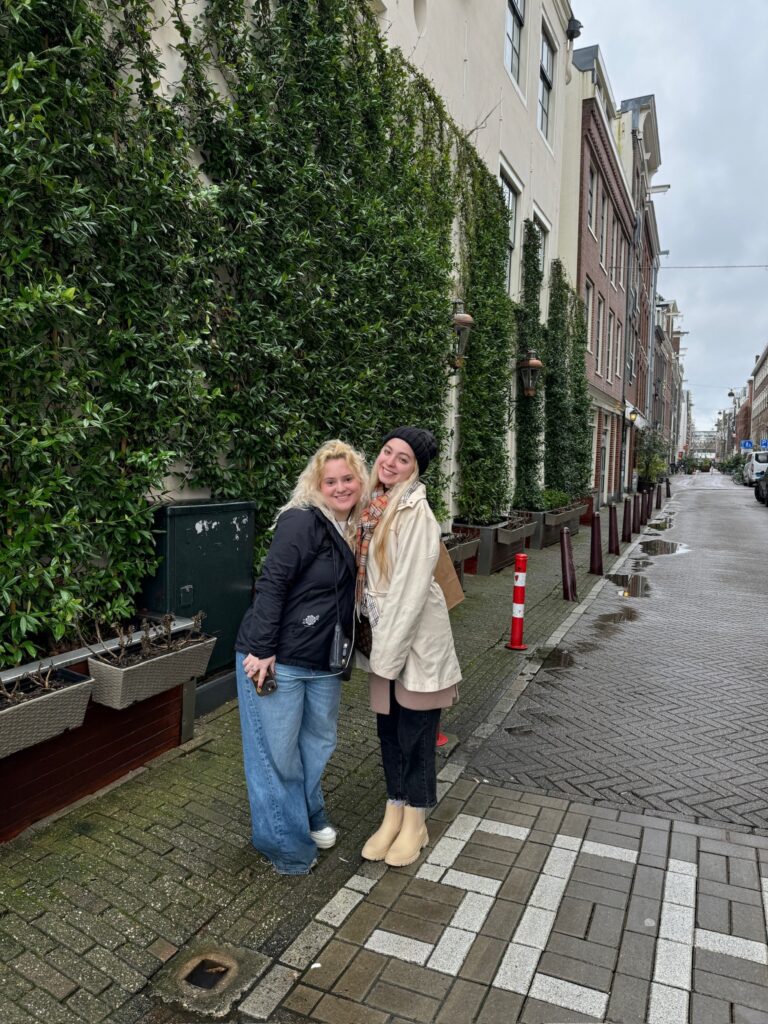The ethics of “The Bridge”

The goal of professor David Blow’s Media Ethics course is to have greater understanding of the various ethical dilemmas that media workers deal with on a daily basis and the implications of their decisions.
One assignment in this class was to watch a documentary titled “The Bridge,” produced by Eric Steel, and react to what was seen. After this was done, the class had a chance to talk to Steel over Zoom and discuss the documentary.
As the documentary begins, a scene is painted. It’s a beautiful day at the San Francisco Golden Gate Bridge. People underneath are boating in the water, families are taking photos together, birds are chirping, and the sun is shining.
As the scene progresses, seemingly out of nowhere the camera pans over to a man looking over the bridge. If you blinked, you might have missed what happened next. The man instantly climbs directly over the bridge’s railing, stumbles off the ledge, and plummets 250 feet down into the water. This was the first of six live-footage suicides Steel captured in “The Bridge” from start to finish.
Steel recorded The Golden Gate Bridge for an entire year, Jan. 1 to Dec. 31, from sunrise to sunset. Steel and his crew witnessed and recorded 23 out of the 24 suicides that occurred during that period.
After watching the documentary, I felt distressed. During the first suicide, I instinctively covered my eyes and subconsciously held my breath without thinking twice about it. But, as the documentary progressed and as more suicides were shown, I troublesomely grew more desensitized watching these individuals jump to their death. As bad as it sounds, as I witnessed more and more of them commit suicide, they started seeming like a characters on screen.
When I brought this idea up in class, many students agreed with it.
Desensitization is becoming more of a problem especially in the media these days.
This begs to ask the question, is Steel doing his viewers a service by shedding light onto the issue of suicide? Or are the viewers of the documentary becoming more desensitized, so the impact that was intended isn’t lasting.
Steel made it apparent that he and his crew wouldn’t just let people jump off the bridge. He noted that he and his crew saved six people while filming “The Bridge” by calling authorities if they felt a person was going to jump. There was footage in the documentary of one woman who was a frequent visitor of the bridge and Steel said he and his team “interrupted her three or four times in the course of a year. And, she’s still alive today.”
Steel said that he and his crew are “all human beings first and filmmakers second” and that every time they saw someone give indicators that they were thinking about jumping like “taking off their shoes, or watch” they would call. Steel said that he and his crew were trained to have the bridge police, the highway patrol on speed dial.”

Though this is reassuring to some, it is still a bit troubling for me to hear and I wonder how true that statement actually is. The reason for this is because of one man in the documentary named Gene.
Gene received the most “screen time” in this documentary. He was one of the recurring “characters” who viewers saw throughout the entire documentary. Unlike the other victims whose deaths were recorded from start to finish in one scene, Gene’s story was first introduced in the beginning of the documentary and then ended before the end. Gene’s death appeared to be the most theatrical compared to the other victims. He stood on top of the bridge railing with his arms out like a bird and fell backward, almost appearing like he was soaring into the water. The other victims slid over the railing and jumped.
In the interview with Steel, he notes that he had 90 mins of footage of Gene on the bridge. And in the documentary, before Gene gets up on the railing, there are several minutes of him pacing back and forth over the bridge. We see zoomed-in shots of Gene leaning on his arms over the railing. We see him looking down at the water a number of times, and we see him running his hands through his hair several times in a clearly anxious manner. To record someone for 90 minutes and clearly see the signs of Gene’s distress that were presented in the documentary, and not call anyone seems unethical to me. You can’t help but think that whoever recorded Gene might have been content with the final shot of him flying off the bridge.
It was a great opportunity to talk to Steel about his thoughts regarding the documentary. But, some of his answers did seem disingenuous and somewhat robotic while talking to my Media Ethics class. He appeared almost bored when discussing the suicide documentary which left some members of the class with a bad taste in their mouth. It is important to note Steel probably went through media training to coach him how to handle backlash on the documentary, and because this documentary aired 20 years ago, he has had to repeat the same story to a great number of people.
All in all, I don’t think that this documentary was necessary. Steel says that suicide is a taboo topic, but in gen-z he believes its “less taboo.” Do we want suicide to become less taboo? There needs to be an awareness regarding this darkness that many struggle with, but recording living humans jumping to their death appears voyeuristic and unnecessary in my opinion.
There are ways to educate and to bring awareness to this topic without taking advantage of someone who’s in a vulnerable state.








